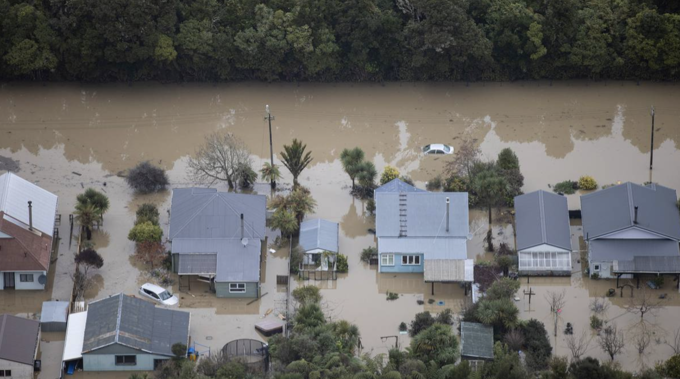
A significant increase in natural peril costs has dragged down the profits of IAG New Zealand - the country's largest general insurer and parent of brands State Insurance, NZI and AMI.
IAG NZ made a profit of A$220 million ($242m) for the year to June 30, down from A$305m the year before.
Its natural peril costs rose from A$88m to A$167m, squeezing its margin down to 12.8 per cent from 19 per cent in its prior financial year.
Those costs included A$52m from the Westport flood in July 2021, A$17m from heavy rain and flooding in Auckland in August 2021 and storms that hit the upper North Island in March this year which cost A$30m.
IAG chief executive Nick Hawkins said climate change and its impact on customers and communities was one of the most important challenges it faced as a business.
"FY22 was one of the most significant peril years we have experienced with multiple events in Australia and New Zealand, including the February 22 floods in northern New South Wales and along the east coast.
"Across Australia and New Zealand, claim lodgements relating to extreme weather events in FY22 more than doubled over the prior year."
Hawkins said to deal with the increasing severity and frequency of extreme weather events, it had put in place its largest to date perils allowance, increasing it by 19 per cent to A$909 million for FY23.
"Our strong view remains that we need a co-ordinated national approach from governments, businesses and communities to build more resilient communities and reduce the impact of natural disasters.
"Using our expertise and knowledge of the changing environment, we will continue to play our part in protecting people and communities."
New Zealand gross written premiums rose 7.7 per cent to A$2.99 billion driven by rate increase across the business.
Hawkins said its New Zealand business had performed well, reflecting growth across its commercial insurance and direct brands, with a volume increase in commercial motor insurance.
"Our New Zealand business saw a solid increase in gross written premiums over the year, and our intermediated business has been reset and positioned for growth under a new leadership team with deep experience and expertise."
Premiums from its business division rose the most at 11.7 per cent, followed by its direct to consumer arm which rose 5.3 per cent. Revenue via its banking partners grew the slowest at 2.2 per cent.
The company noted retention rates in its business division remained strong and improved on prior year levels but new business growth was down on FY2021, possibly driven by economic uncertainty.
It was a similar story in its direct and banking partner divisions, with strong retention rates but a fall in new business.
The company reported a higher underlying loss ratio of 63.3 per cent, up from 56.7 per cent.
While there were lower motor claims due to Covid-19 lockdown restrictions, this was offset by higher average claim costs - particularly in the home insurance category.
There were also higher large commercial property claims due to several high-value fire events.
But the business was able to hold its underwriting expenses largely flat, with an increase from A$212m to A$218m and fall in its admin expense ratio from 13.2 per cent to 12.7 per cent.
That was down to higher earned premiums and ongoing cost management, although it had higher employee costs due to repatriation of offshore team members and an increase for frontline teams.
Parent company IAG, which is listed on the ASX, made a net profit of A$347m - a turnaround from its A$427m loss in the prior year, with gross written premiums up 5.7 per cent to A$13.3b.
It will pay a dividend of A11cps, down from A20cps.
-Tamsyn Parker, NZ Herald
Take your Radio, Podcasts and Music with you









